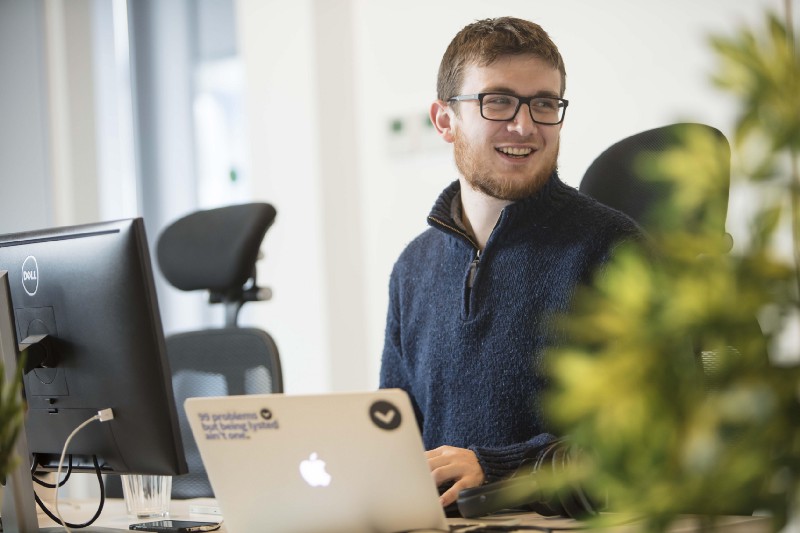
- Name: Fergus Doyle
- Age: 31
- Current position: Consultant CTO / Coach / Advisor
- Previous positions: CTO, VP Technology, Head of Platform, Senior Software Engineer, Lead Developer, Developer
1. Tell us about your life before leadership
I’ve always been in work environments requiring a high degree of autonomy and creativity. I started my career in technology at a small digital agency working on projects for clients ranging from the Fairtrade Foundation to IDEO. The skills I learned during that time were not only relevant to my day-to-day now but also the start of my journey into leadership. Hard deliverables and deadlines mean you often have to think creatively about how to make the project team most effective.
2. How did your first get into leadership — natural progression or intentional?
It felt natural more than intentional. Leadership is often conflated with seniority and pushed on team members either because of their ability to deliver or their years of experience. I’ve always been interested in the mechanics of teams, so, stepping away from contributing as an individual and focusing instead on how we could deliver better as a team felt like the right step. When I joined onefinestay, there were a number of areas which could have benefited from additional team and technology leadership, so I was supported in assuming those responsibilities.
3. How did you manage the transition? What came easily / what was difficult?
Onefinestay, like many high-growth companies, was faced with the challenge of needing to introduce additional structure to help support the expanding team. We formalised my role as Head of Platform out of a flat structure, so the most important thing was ensuring everyone felt comfortable that first, there was value in the role and secondly, that I was best equipped to fill it. I found it hard to scale back and drop my previous responsibilities, especially when I’d been helping with hands-on delivery.
4. What was your biggest failure in that first leadership role?
I contributed production code longer than I should have. A turning point for me was that the value in clarifying longer term vision (which is seldom done with code) far outweighed my individual contributions.
5. What made you keep doing it?
I could see that the mistakes I was making would be rectified in time and with more practice. I also had an excellent CTO and mentor who guided me through the process.
6. Tell us a fun fact that nobody knows about you
I do an excellent walrus impression! No seriously — I am a qualified kiteboarding instructor.
7. What are the three key skills you think every leader needs?
a) Great communication skills and the ability to articulate direction.
b) Knowing your own limits and when to ask for help and advice.
c) Understanding how to pick your battles. Knowing which ones contribute to the long term vision and which ones serve as a distraction.
8. What have you learned about acquiring and retaining talent?
That it’s invariably hard. Once they’ve hired new talent, people often overlook the importance of retaining them. I would always say don’t underestimate employer brand power when devising a long-term hiring strategy. Create an amazing place to work and make sure that’s being communicated outside the immediate team. Also, interviewing isn’t for everybody; so think carefully about who is involved in the the hiring process and the process itself.
9. How do you motivate your team and manage their stress levels?
If you can define and effectively communicate direction, you can give your team the freedom to act autonomously and cut down your management overhead drastically. Understanding personal ambition and motivation also helps you make decisions around making your team most productive.
Managing expectations hugely helps in alleviating stress and anxiety. This goes for both inside and outside the team, as well as being able to translate and communicate priority and importance.

10. How do you manage your own stress levels and productivity?
I write a daily to-do list and mark each item ‘essential’ or ‘optional’. A good life hack is to make sure you’re adding new items to the list as they come up throughout the day; it helps to effectively prioritise things instead of being derailed. There’s also a trick to recognising if you’re lacking motivation and productivity on one project, use it as an opportunity to switch on to another.
And, while I’m no fitness buff, I find by walking as much as I can on my commute and throughout the day helps with both energy levels and clarifying my thoughts.
11. How do you stay in sync with other parts of the business?
Regular meet-up between leaders from all parts of the business to discuss strategy and other important things. I’ve found that if you’re doing that well, it’s easier to identify which other parts of the business should be involved in any current projects and to structure a forum for doing that accordingly.
12. What product do you wish you’d invented?
The easy answer here would be GitHub, but I’ll go with Jira. It’s easily the most powerful workflow / project management tool on the market, but suffers from years of compounded product (and presumably technical) debt. I think with some more ruthless roadmap planning, Jira would be a lot more usable and accessible.
Part of the new ‘Spotlight on’ series — Follow us to be kept up-to-date on the next segment and other articles.
If you, or your CTO / technology lead would benefit from any of the services offered by the CTO Craft community, visit: www.ctocraft.com or contact us via email at: info@ctocraft.com.
Subscribe here to Tech Manager Weekly for a free weekly dose of tech culture, hiring, development, process and more…

